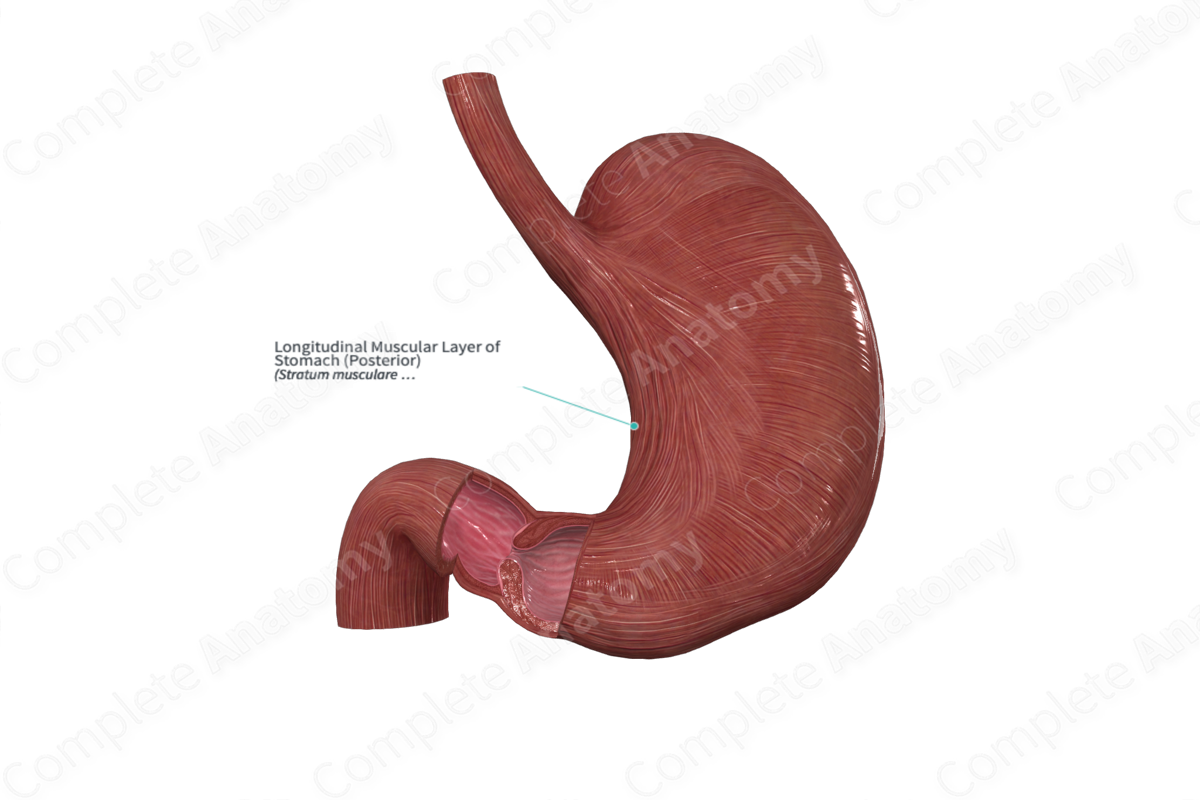
Longitudinal Muscular Layer of Stomach (Posterior)
Stratum musculare longitudinale gastris
Read moreStructure/Morphology
The longitudinal muscular layer of the stomach is a layer of smooth muscle fibers and analogous to the longitudinal layer of muscle found throughout the digestive tract. It forms the outermost part of the muscular layer of the stomach and sits just deep to the overlying serosal layer that covers the stomach.
Key Features/Anatomical Relations
The fibers of the longitudinal muscular layer are oriented in parallel with the longitudinal axis of the stomach and are continuous with the longitudinal layer of the esophagus and duodenum (Standring, 2016). They’re found more densely on the greater and lesser curvatures of the stomach and more sparsely on the anterior and posterior surfaces of the body of the stomach.
Function
The longitudinal layer of the muscle layer of the stomach acts to shorten the length of the stomach, aiding both mixing of gastric contents and gastric emptying.
References
Standring, S. (2016) Gray's Anatomy: The Anatomical Basis of Clinical Practice. Gray's Anatomy Series 41 edn.: Elsevier Limited.



